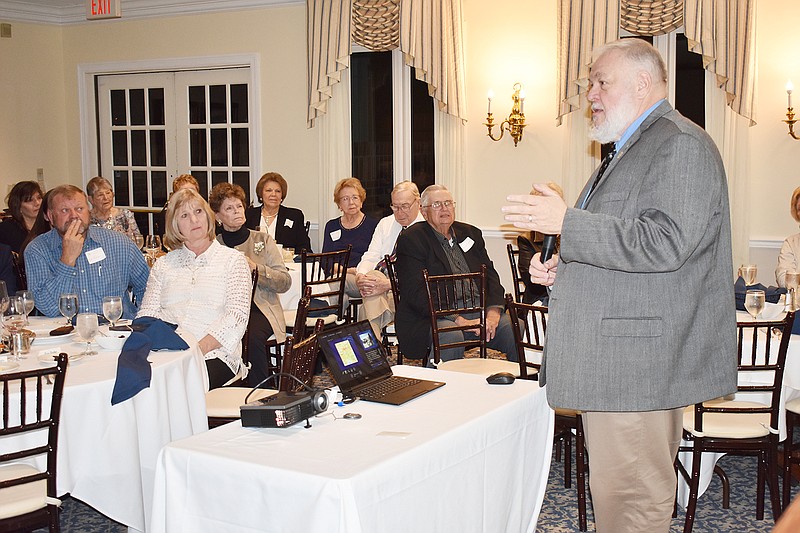Alex Barker brought history alive during Sunday's Cole County Historical Society and Museum annual dinner by discussing research done on tzi, a mummified frozen iceman who lived some 5,300 years ago.
Barker was the guest speaker for the dinner, held at the Jefferson City Country Club. He is the director of the University of Missouri Museum of Art and Archaeology and its Museum of Anthropology. He is also president of the American Anthropological Association.
Through the story of tzi, Barker showed how modern technology and research techniques can teach us an incredible amount of details about the lives of primitive humans such as tzi, an iceman who was discovered in 1991 on the border of Italy and Austria.
tzi lived in the copper age. He was 45 years old and had a copper axe as well as a tool kit with complete tools. He was wearing a goat and sheep skin coat, a sheep skin loan cloth and bear skin cap. He also had a bow with broken arrows.
Barker said researchers have performed extensive tests on tzi. One test went to great lengths to recreate the type of shoe he wore, then walked through a mountain pass during the winter, simulating what it would have been like for the primitive man.
tzi had 61 tattoos - interestingly in places that aligned with acupuncture points. That was 2,000 years before the Chinese pioneered the science, Barker said.
Intestinal autopsies of the ancient DNA in tzi's stomach gave researchers a good idea of precisely what he ate and when. Among other things, he dined on goats and high-fat meats, wheat that was probably made into bread. He was also lactose intolerant.
It took a decade to determine what killed tzi, but eventually an arrow point was discovered that showed he was shot with an arrow and likely bled out fairly quickly. However, a compound found in his blood indicates his body was already trying to heal itself when he died, showing he didn't die immediately.
A mass of red blood cells at the base of his head shows he was hit there hard, possibly by a rock. That could have been his final death blow.
Barker told the 60-plus attendees that the past is a precious commodity that's delicate and easy to lose.
"Please remember what you do is important," Barker said. "The past defines who we are today."
Also at the meeting, Clay Broughton announced the Hope Award was given to B.J. DeLong, who was unable to attend the meeting.
The Catherine and Alex Hope Award has been given annually since 1973 to a resident of Cole County who has made significant contributions during the year in the dissemination, preservation, recording and distilling of interest in the history of Missouri in general, and in Cole County in particular. Those contributions can be through research, writing, recording, photography, genealogy or any other means of personal interest.
Broughton said DeLong has been a member of the Historical Society for 60 years and is one of the organization's most prolific benefactors and donors.
"It's hard to look at any part of our museum and not seeing (DeLong's) influence," he said.

